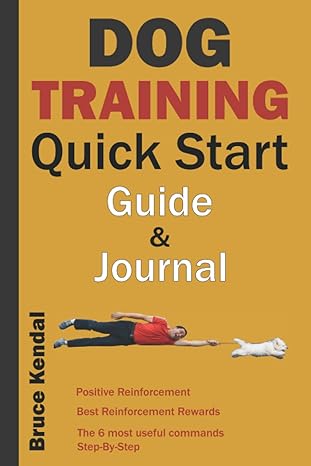Taking care of his potty business is something your puppy must learn with the help of his puppy parents (that’s you). This is going to take some patience from both of you.
Your puppy has two things working against him:
- He doesn’t yet understand what you want from him
- Like a child, he is still developing the ability to control his bladder and bowels.
The good news is that dogs (and puppies) have a natural tendency to not make potty messes where they sleep. In puppy paper training we make use of this natural born instinct and eventually expand this instinctual area to include your entire home.
The keys to sweet success are:
- Diligence
- Massive Praise
- Positive Attitude
It’s easier than you may think. It can even be an enjoyable experience for both you and your puppy.
Paper Potty Training
Paper training is when you train your puppy to go to the bathroom on newspaper. It is not the same as housebreaking, you are training your dog to potty inside the home.
At six weeks, the puppy has very little, if any, bladder control. He will need to go to the bathroom every hour or so. However, you can begin to work at this age to prepare your puppy for when he can become truly paper trained – which means that he will choose to go to the bathroom on the paper rather than elsewhere in the house.
How To Begin Paper Training
Set up an area for your puppy that is large enough to house a dog bed, food and water bowls, and provide a little play area for her. Bathrooms and laundry rooms are traditionally used for this area. If you don’t wish to take over one of these areas, a child’s playpen can work amazingly. These are the perfect size for most puppies.
This area will temporarily serve multiple functions. First, as a safe contained area to place your puppy when you are unable to supervise. Next, as the place where a bed is setup for him to sleep. And finally it will contain an area for your puppy to potty.
Spread three or four layers of paper down across the entire area to start. I like to use newspaper because it is large and is less likely to bunch up leaving holes in the cover.
Place food and water near the bed on one end of the area. The other side of the covered area is intended for the puppy’s bathroom.
The area should be large enough to give the puppy a little area to play without knocking over the food and water or rolling in his potty mess.
At first, your puppy will most likely shred the paper and make a little mess. That’s OK, he’s just playing. However, if you keep your puppy in too small an area, he will get used to sleeping in the same area as he goes to the bathroom – something you want to avoid.
Avoid using cardboard boxes for potty training. While some use a large box, this may confuse your puppy and cause the bad habit of defecating in the cage at inopportune times.
Keep the puppy in this area at night and when you cannot supervise.
Over time, your puppy will naturally choose an area of the cage to defecate. Once this occurs, usually after a few days, you should begin withdrawing some of the newspapers. Try removing about 5 to 10 percent of the paper every 3 to 4 days. It is better to go slowly.
If your puppy potties outside the paper area it indicates that you removed too much paper too soon. Enlarge the papered area again for a few days before you try again.
Outside the Paper Training Area
Observe your puppy continuously when he is not in his restricted area. Consider attaching a small leash while you’re working with him.
Put some newspapers on the floor three or 4 feet from where you are playing with your puppy.
Whenever your puppy shows signs of having to go to the bathroom, immediately take your puppy to the papers. The signs include sniffing the ground carefully, circling and squatting. Place your puppy on the paper and say, “potty”, or something similar.
Praise your puppy profusely every time he goes to the bathroom in the papers.
Take your puppy to the newspapers every 30 minutes before you have to leave. Give him the opportunity to use the paper if necessary.
If your puppy starts to go to the bathroom on the floor, clap your hands loudly to draw his attention from pottying (this is not to scare him, but to grab his attention so he temporarily forgets about pottying). Say “no” and move him to the papers. Then praise him for using the newspapers. This may sound counterintuitive, but you are teaching your puppy what is good and bad. Do not use physical punishment in such a young puppy.
Clean puppies accidents that occurred when you were not watching your puppy, but do not scold him for it. Rubbing the nose of a dog in the accident may seem to work, but the pup has no idea what he did. You are scolding the puppy’s urine on the floor, not the puppy peeing on the floor. For him, the two events are unrelated.
Puppy Potty Schedule
The rule of thumb for puppy potty training:
- Puppies under three months must be relieved approximately every one to two hours
- Puppies from three to four months every three hours
- Dogs that are five to six months old, about every four hours
In addition, the new puppy must potty after waking, about twenty minutes after eating, playing or drinking and then again an hour later.



